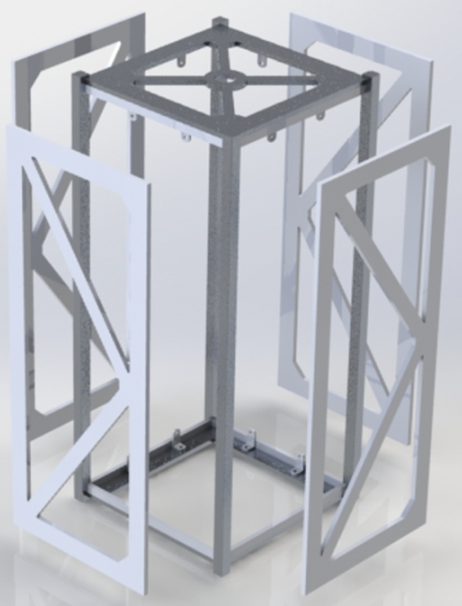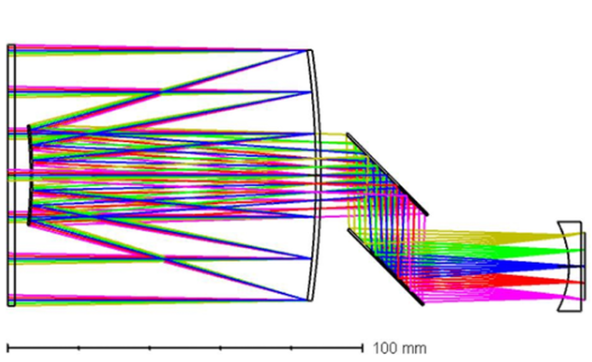2018-2019
In the first year of the project, the scope for the structure was based around the requirement creation, and the initial wall design. It was important to create requirements based around the standards and limitations set by Nanoracks, and the Canadian Space Agency.
The structure went through a few different designs, but the final iteration for this school year can be seen in the photo below. This design included four rails to hold the CubeSat in the launch deployer on the International Space Station, as well as four walls designed with trusses, to provide support against vibrations and twisting.

The optical system has been collaborated on with the University of Laval in Quebec. They have been providing information on the mirrors and lenses for the optics, as well as creating ray diagrams. Below is an image of the proposed optical mirror set-up at the end of the school year. This set-up included a primary and secondary mirror, as well as two 45 degree mirrors to shorten the size of the optical enclosure. This custom optical system is based on a Cassegrain telescope.

Summer 2019
Over the summer, collaboration between the summer student and University of Laval took place to make decisions on the mirror set-up for the optical enclosure. This included optimization of the optical system’s length, through the use of mirrors. A request for deviation was also submitted to the Canadian Space Agency and Nanoracks, for a “Tuna Can” attachment on the -Z face of the satellite. This allows for an additional 3.4 cm outside of the 2U size restrictions. The optical enclosure was the perfect size to fit within the radius of the tuna can, so the entire system was shifted down, to give more space inside the 2U portion for electrical boards, and attitude determination components.
2019-2020
Summer 2020
Future scopes for the Structure and Payload are currently being determined.

